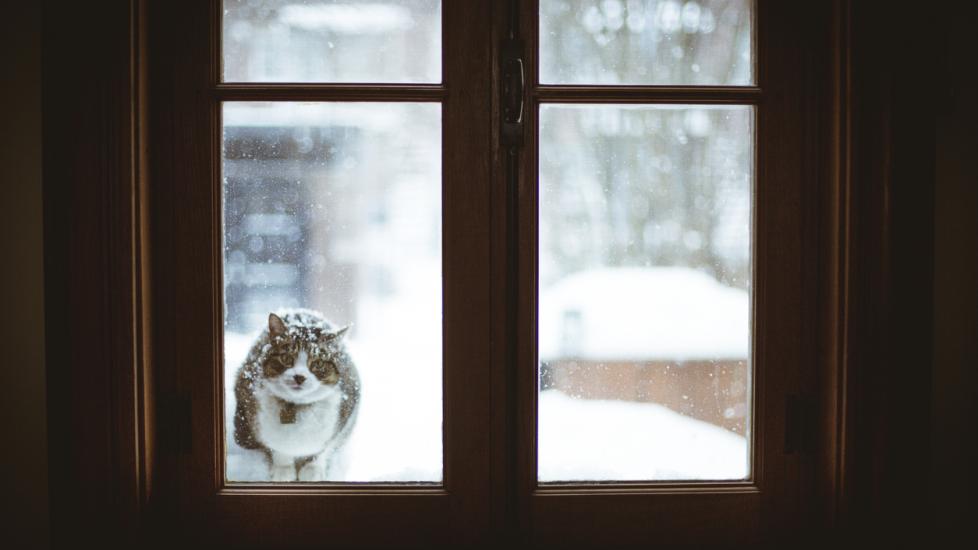Frostbite in Cats
What Is Frostbite in Cats?
Frostbite is the freezing of a part of the body and often appears as damage to the skin. This damage is caused by exposure to freezing temperatures for a prolonged period of time.
Cats are most vulnerable to frostbite when exposed to high winds on very cold days. This exposure can result in hypothermia (low body temperature), which causes the narrowing of blood vessels in extremities so that blood can be diverted to vital core organs. Ice may also form in affected tissues, causing cell lysis (disintegration) and further damage.
The nose, ears, tail, and digits are the most affected areas in cats. Injury of these tissues may not show until damaged tissue sloughs (sheds), which may not occur until many days after exposure.
Frostbite is an emergency, so if you suspect it in your cat, contact your veterinarian or a local emergency veterinary facility as soon as possible.
Symptoms of Frostbite in Cats
Frostbite may not be evident for several days or weeks after exposure. If your cat has been outside on a windy day with freezing temperatures, it’s important to watch for the following signs of frostbite:
-
Cold skin or extremities
-
Discolored skin (white or pale, gray, blue, red, deep purple, or black)
-
Skin that becomes red, swollen, or painful as it thaws
-
Blisters that may be filled with blood
-
Ulcers on skin
-
Cold, fragile skin that breaks when touched
-
Dead skin that sloughs off (the affected skin may gradually become blacker until it falls off)
Cold skin, discoloration of skin, and swelling and pain could be noticed shortly after exposure. It’s never a bad idea to call your vet with any concerns—they may have you monitor for signs of frostbite or bring your cat in for observation.
There are also degrees of frostbite that help define the severity of tissue damage and expected prognosis:
-
First-degree frostbite results in erythema (redness) after the skin is rewarmed. This level of frostbite only affects the top layer of skin and doesn’t typically cause permanent injury.
-
Second-degree frostbite results in blistering of the affected skin.
-
Third- and fourth-degree frostbite both result in permanent damage, and the affected tissues are more susceptible to infection. Third-degree frostbite causes skin death, and fourth-degree frostbite causes gangrene (death of tissue) potentially resulting in the loss of the affected body part.
Cause of Frostbite in Cats
While frostbite usually happens at extremely cold temperatures, any cat living outdoors where temperatures get below 32 F (0 C) is at risk. Cats who are more at risk are kittens, senior cats, and cats with medical conditions that decrease blood flow to the extremities, including diabetes, kidney disease, heart disease, and hyperthyroidism.
How Veterinarians Diagnose Frostbite in Cats
Diagnosis of frostbite is made by physical exam of the cat combined with a history of exposure to cold temperatures. There could be other conditions that can cause ulcers of the skin, such as trauma, burns, autoimmune diseases, and infections, but the key with frostbite is the combination of physical exam findings and history of exposure to cold.
Treatment of Frostbite in Cats
If your cat has been exposed to a very cold day outdoors, bring her indoors to a warm, dry location as soon as possible. If she is shivering or lethargic, she may be hypothermic. It can be helpful to wrap your cat gently in towels that have been warmed in a dryer—to begin warming the cat slowly.
If some areas of skin appear frostbitten, DO NOT rub the skin or use a hair dryer to try to warm the area—both actions can result in damage to the affected skin. You can re-warm frostbitten skin with warm (not hot) water in a bowl and then pat the areas dry with a towel (again, don’t rub). Continue to keep your cat warm while on the way to your veterinarian.
After examining your cat, your veterinarian will likely prescribe pain medications and may also prescribe antibiotics if any areas appear to be at risk for infection. Do not give your cat any pain medications designed for humans—these are not safe for cats. Your cat will need to be monitored for several days to determine if the frostbitten skin recovers. If the paws are affected, cage rest may be necessary to decrease pain while the paws heal.
If a large area of skin has died or there is a risk of gangrene, the affected area may have to be amputated. Your veterinarian will check your cat closely and recommend the best treatment.
Recovery and Management of Frostbite in Cats
It may take several days to weeks for your cat to recover from frostbite. The recovery time and prognosis are dependent upon the severity of frostbite and the amount of skin affected. Pain medications will be needed while your cat is healing, and antibiotics may also be needed to treat any infections that develop.
Frostbite in Cats FAQs
At what temperature do cats get frostbite?
Any cat that is outside when temperatures are below 32 degrees Fahrenheit is at risk of getting frostbite, but very cold days with high winds increase risk.
What does frostbite look like on cats?
Frostbite may appear as cold, fragile skin that could be discolored (white or pale, gray, blue, red, deep purple, or black). There may also be blisters or ulcers (sores) on the skin and eventually dead or sloughing skin.
Can cats recover from frostbite?
Yes, with proper care and timeliness of treatment, cats can recover from frostbite, and many affected cats have no permanent damage.
Featured Image: iStock/Linda Raymond
